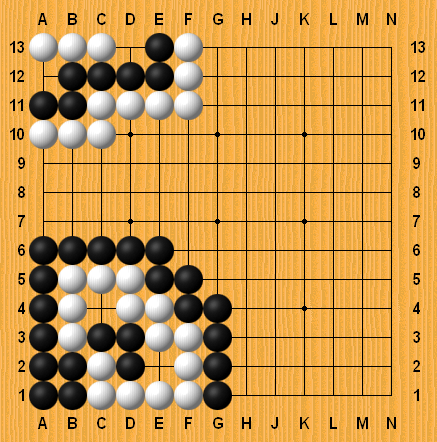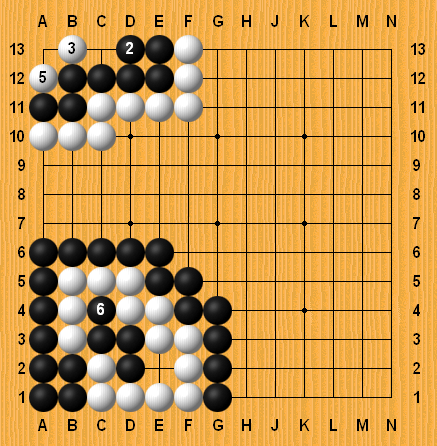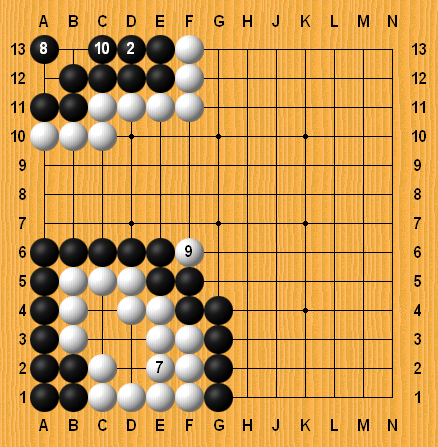Hi beginsA291,
beginsA291 wrote:
1) What happens if the testing finds that the invasion turns out to be viable and a live invasion is formed? Are the new stones of both colours that were placed since the end of the game left on the board? (So that the score is counted using the revised board.)
No, they are removed. This rule allows to maintain the equivalence between aera scoring and territory scoring.
With aera scoring (go played in China), the winner is the one who manages to
get more intersections than her opponent. An intersection is awarded to a player if she has a living stone on it, or if it is so closely surrounded by her stones that her opponent can't place a living stone on it.
In territory scoring (go played in Japan), the winner is the one who has surrounded more intersection than her opponent and has taken more prisoners.
If both players have played exactly the same number of stones, the result is the same, because when the dead stones and prisoners are used to fill the territories, before counting, its doesn't change anything to the aera score : an intersection with a stone on it is worth one point as well as a surrounded empty intersection. And if there are exactly the same number of black and white stones, the winner, according to aera scoring, is the one with the largest empty space left.
The difference between the two systems arise when there are more stones of one given colour. Having more surrounded intersections + prisoners becomes then a goal that is distinct from getting the largest part of the board.
In all traditions, the game of go consists in getting the largest part of the board, and counting the empty spaces plus prisoners is just the most efficient way of visualizing it in a 361-interection grid.
This is why the rule says that Black has not to pay the price to capture the white stone. It would force her to play several stones in a row (while White passes), and would break the equivalence between aera and territory + prisoners.
For handicap games, aera rulesets (chinese, AGA etc) give a bonus to White, so that aera and territory remain equivalent.
In reality, there can be one point of difference between aera and territory, if Black plays last, because she has one more stone on the board than White.
beginsA291 wrote:
2) Do seperate territories resolve independently?
During the game, no. The typical case being a ko that can only be won by sacrificing something elsewhere that, otherwise, would have been alive.
After both players have passed, yes. The 1949 japanese rules lists independant statuts for each possible case, and the 1989 rules says that ko fights are forbidden during the confirmation of life and death.
Example (White plays 1 in A12, Black plays 4 in A13) :



Here, Black's top group is alive only if her bottom 3 stones die. Black sacrifices her seki in order to win the ko.
But if these shapes remain on the board after both players have passed, the 1949 rule lists the top shape as dead regardless of the state of the rest of the board, and the 1989 rule says that Black 8 is illegal : Black hasn't the right to recapture a ko during the confirmation phase.
Under chinese rules, if there is a disagreement between the players, then everything that remains on the board is considered to be alive.
In your example, if Black adds three stones in order to capture the white one, while White passes, at the end, Black has still 15 points (the 15 intersections on the right side), and White 10 (the 10 intersections on the left side).
So in practice, disagreements are settled by actually capturing (or failing to capture) the disputed group. Thanks to the aera scoring system, there is no need to remove the extra stones, they don't affect the score.
In the above figure Black's top group is alive and her bottom 3 stones are dead under chinese rules, while the top group is dead and the bottom stones alive in seki under japanese rules.
This is an extremely rare case where the japanese and chinese rules diverge completely.



